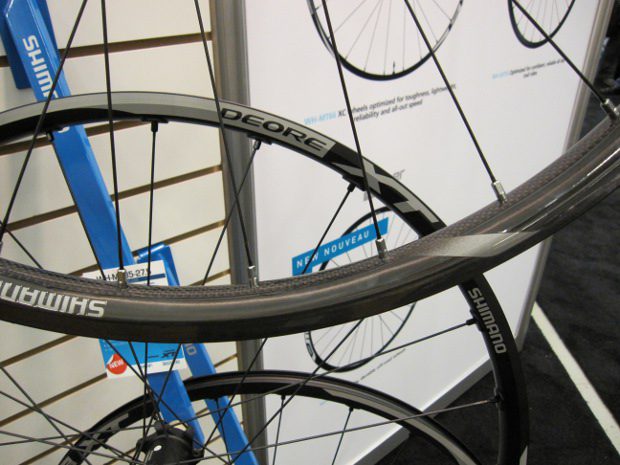Do smaller wheels really accelerate faster?
It has been a while since the introduction of 29" and 27.5" mountain bike wheels, but the debate over the best wheel size still continues. Eager enthusiasts have a lot of material to discuss on this subject, but the argument that has always pained me most is that smaller wheels accelerate faster. Yes, smaller wheels accelerate faster, but it doesn’t matter.

by Evan McNeely

It has been a while since the introduction of 29″ and 27.5″ mountain bike wheels, but the debate over the best wheel size still continues. Eager enthusiasts have a lot of material to discuss on this subject, but the argument that has always pained me most is that smaller wheels accelerate faster. Yes, smaller wheels accelerate faster, but it doesn’t matter.
It all has to do with the rotational moment of inertia. The moment of inertia of an object is simply how easy it is to move the object. The heavier something is, the harder it is to move. The more that mass is shifted out from the centre of rotation, the harder it becomes to spin. The “Big Wheel” on the Price is Right is heavy and big and it takes a lot of effort to spin. On the other extreme, a skateboard wheel is light and small and you can spin it with your pinky figure. A 29” wheel has more mass at a larger radius from the centre of rotation (the hub), and thus has a higher moment of inertia than a smaller wheel and is harder to get moving.
So yes, bigger wheels will accelerate more slowly. But it doesn’t matter.
I calculated the inertia of 27.5” and 29” wheels, using the masses of Stan’s Crest rims and Kenda Karma tires, and then found the power required to accelerate the wheels during a mountain bike race start. The results may surprise you at first. It only takes 12.3 watts and 10.7 watts to accelerate 29” and 27.5” wheelsets (both wheels), respectively, up to a speed of 40 km/h in 8 seconds. (I took that speed and time from my start acceleration at the Sea Otter Classic this past spring.) There is only a 1.5-watt difference between wheel sizes. More important, the rotational acceleration of the wheels only counts for 1.3 per cent of the total power required during that starting sprint (assuming 900-watt average).
Put your bike on a trainer with no resistance. How effortless is it to pedal?
Where is the other 98.7 per cent? Well, it takes a lot of energy to get the entire system (you and your bike) up to 40 km/h. For me, that is 175 lb. of body and bike and it takes the whole 900 watts to move us. Add rolling resistance and air drag on top of that and the rotational inertia of the wheels becomes a small factor.
Evan McNeely is a professional mountain bike and cyclocross racer. He’s also a fourth-year mechanical engineering student at Carleton University.
